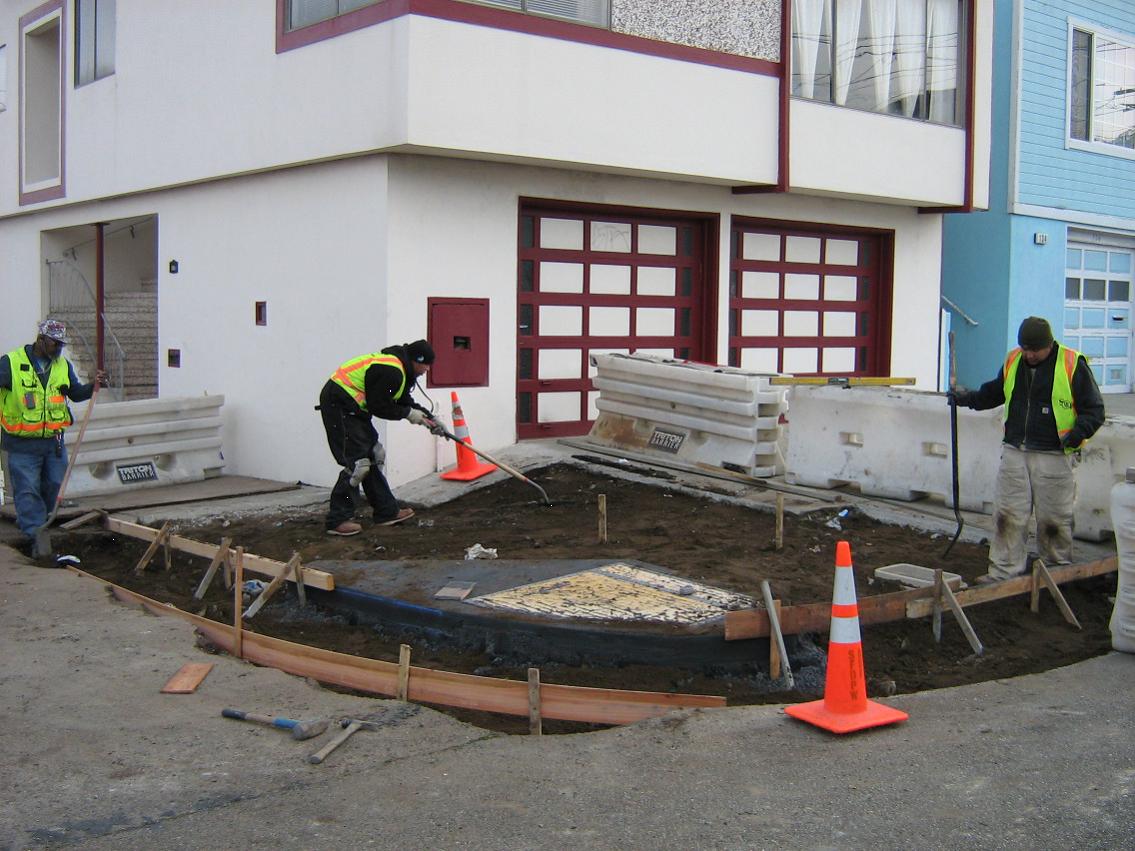Poor coordination between city agencies has led to many a missed opportunity to build pedestrian safety measures when crews are already digging into a street corner for maintenance purposes. With the Department of Public Works ramping up its street re-paving work thanks to the Prop B Street Improvement Bond and upgrading many corner curb ramps to meet ADA standards, the agency says it's finally starting to coordinate with the SFMTA to efficiently incorporate life-saving sidewalk extensions into its plans.

"A process has been spearheaded by the MTA and Public Works to identify key locations where bulb-outs are either necessary or would be the best improvement," John Thomas, DPW's project manager for the street re-paving program, told a Board of Supervisors committee yesterday.
Safe streets advocates have for years criticized the lack of such coordination when crews dig into a street corner where a bulb-out could improve pedestrian visibility, shorten crossing distances, and cause drivers to make turns more carefully. Livable City Executive Director Tom Radulovich noted that DPW recently installed ADA-compliant curb ramps along dangerous Guerrero Street in the Mission, as well as the deadly intersection of Valencia Street and Duboce Avenue one block away, but didn't extend any of the sidewalks.
"They demolished and rebuilt each street corner on Guerrero, but didn't bulb out the curbs, even though they rebuilt the sidewalks, gutters, and catchbasins," said Radulovich. "Yes, it would have cost more to provide some basic pedestrian safety improvements, but not much more. And now, because of the city's five-year rule, DPW has made it even harder to improve pedestrian safety on this dangerous street."
"The curb ramp program could've been a good ped safety program as well," he said.
The five-year rule, according to Radulovich, is the city's policy of not doing major street work on the same spot for five years unless it's an emergency. While that rule seems to be adhered to for the most part, the same can't be said of policies mandating that safety improvements like bulb-outs be coordinated with other street work were called for in the 2005 Complete Streets Ordinance and the 2010 Better Streets Plan.
To nudge city agencies toward actually implementing those coordination efforts, Supervisor Scott Wiener pushed through a package of legislation last year aimed at streamlining pedestrian safety improvements like bulb-outs, including the creation of an interagency Street Design Review Committee. Wiener pressed DPW and SFMTA staffers on the bulb-out issue at a hearing he called to review the city's street construction practices, held at yesterday's Land Use and Economic Development Committee meeting.
"There have been problematic intersections that we've wanted to bulb out for a while, that were taken apart and put back together again with curb ramps with the exact same geometry," said Wiener.
According to Wiener and Thomas of DPW, the "spark" that finally kickstarted DPW and SFMTA's coordination efforts was a particularly major wasted opportunity where curb ramps were added at the massive intersection of Market, Sanchez, and 15th Streets. Apparently, it was such a shame that the agencies actually decided to act.
As DPW continues to fill its massive re-paving backlog using the $248 million Prop B streets bond, Thomas said the agency is looking to incorporate data collected as part of the city's WalkFirst program, which identifies the most dangerous spots where pedestrian safety fixes are needed most.





